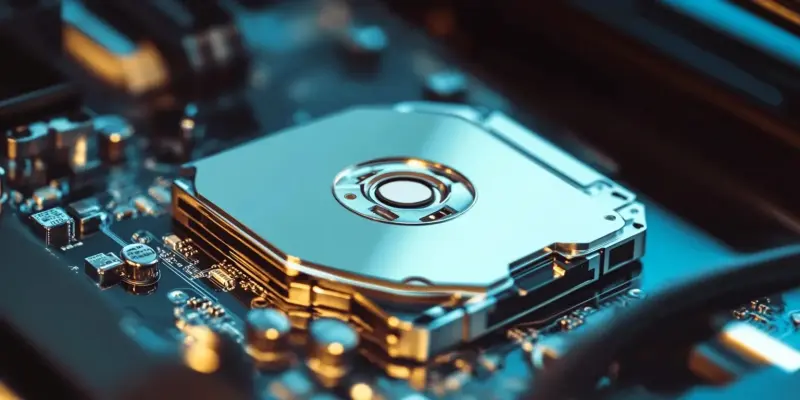The hard drive market, especially for Seagate products, is seeing a spike in sophisticated fraud where unscrupulous sellers are passing used drives off as new. This deceptive practice is not only troubling for consumers but also poses a significant challenge for Seagate, a trusted name in the storage industry since 1978. Fraudsters are employing advanced tactics such as fake labels, altered operating hours, and manipulated SMART values to make old drives appear brand new. Such sinister advancements have heightened the need for buyers to stay informed, vigilant, and proactive in protecting themselves from being duped.
Increasingly Sophisticated Fraud Techniques
Fraudsters targeting Seagate hard drives, including popular models like Exos and IronWolf, have reached new levels of sophistication in their deception methods. By manipulating SMART values and altering operating hours to give the false impression of newness, these perpetrators have escalated their fraudulent activities to unprecedented degrees. While Seagate Technology has built its reputation on reliability, this growing menace has understandably caused concern among consumers.
Adding to the complexity is the introduction of counterfeit stickers and labels designed to mimic the originals closely. These fake labels serve to further obscure the true condition of the drives, making it incredibly challenging for even the most discerning buyers to distinguish between genuinely new products and tampered used ones. The level of intricacy in these fraudulent activities highlights the pressing need for consumers to arm themselves with knowledge and sharpen their awareness to avoid falling victim to such schemes.
Manipulation of Key Metrics
Historically, metrics such as SMART (Self-Monitoring, Analysis, and Reporting Technology) values have been reliable indicators of a hard drive’s health and longevity. However, the ingenuity of fraudsters has found ways to distort these critical metrics. By altering SMART values, they can falsify the reported operating hours, presenting a misleading facade of newness to unsuspecting buyers. This manipulation makes it exponentially more difficult for consumers to rely on traditional methods for assessing the authenticity of their purchases.
Given the sophistication of these fraudulent tactics, buyers must adopt more thorough evaluation techniques. Simple reliance on basic metrics is no longer sufficient. It has become imperative to look deeper by checking the operating hours of individual heads and scrutinizing detailed log files. These methods can reveal inconsistencies and anomalies that signal potential tampering. Thus, moving beyond surface-level metrics and adopting a more comprehensive approach is crucial in identifying counterfeit hard drives.
Effective Detection Strategies
To protect themselves from falling into the traps set by sophisticated fraudsters, consumers can employ several effective detection strategies when evaluating Seagate hard drives. One critical method involves analyzing the operating hours of individual heads within the drive. Because tampering with this intricate data is challenging, discrepancies can serve as red flags indicating the possibility of prior use. Additionally, verifying the functionality of QR codes is another vital step. Authentic QR codes should seamlessly link to Seagate’s warranty page with pre-filled serial numbers, whereas counterfeit codes often necessitate manual entry.
Another recommended strategy involves a thorough analysis of log files. Failed self-test or error logs indicate that the drive has undergone significant prior use, casting doubt on claims of it being new. Potential buyers should also exercise caution when considering drives with production dates older than six months. Carefully inspecting stickers for signs of tampering or inauthenticity can further aid in identifying fake drives. By employing a multifaceted approach, consumers can better safeguard themselves against fraudulent hard drives.
Dealing with Fake Drives
In the unfortunate event that a consumer realizes they have purchased a counterfeit Seagate hard drive, swift and resolute action is imperative. Documenting all evidence meticulously, including screenshots, photos, and proof of purchase, becomes crucial when contacting the seller to request a refund. Presenting clear and compelling evidence is often necessary to substantiate the claim of fraud. Should the seller prove uncooperative or dismissive, the next logical step involves reporting the incident to consumer protection agencies or relevant authorities.
Understanding the origins of these fake drives can also help mitigate future risks. Reports indicate a significant number of counterfeit hard drives originate from sources in China. However, it is essential to note that OEMs and cloud providers are not believed to be complicit in these fraudulent activities. By remaining vigilant and proactive, consumers can better navigate the complexities of hard drive purchases in an increasingly deceptive marketplace.
Staying Informed and Vigilant
The hard drive market is currently grappling with a rise in sophisticated fraud, particularly affecting Seagate products. Unscrupulous sellers are passing off used drives as new, a deceptive practice that not only causes significant concern for consumers but also presents a substantial challenge for Seagate, a storied name in the storage industry since its founding in 1978. These fraudsters are using advanced techniques like fake labels, altered operational hours, and manipulated SMART values to disguise old drives as brand new. These insidious developments have turned the spotlight on the necessity for buyers to be well-informed, vigilant, and proactive to avoid being tricked. For instance, consumers should closely examine product details, verify seller reputations, and possibly run diagnostic tests on newly purchased drives to confirm their authenticity. As fraudulent tactics become more sophisticated, a proactive approach is essential to protect against being duped in this increasingly deceitful market landscape.

